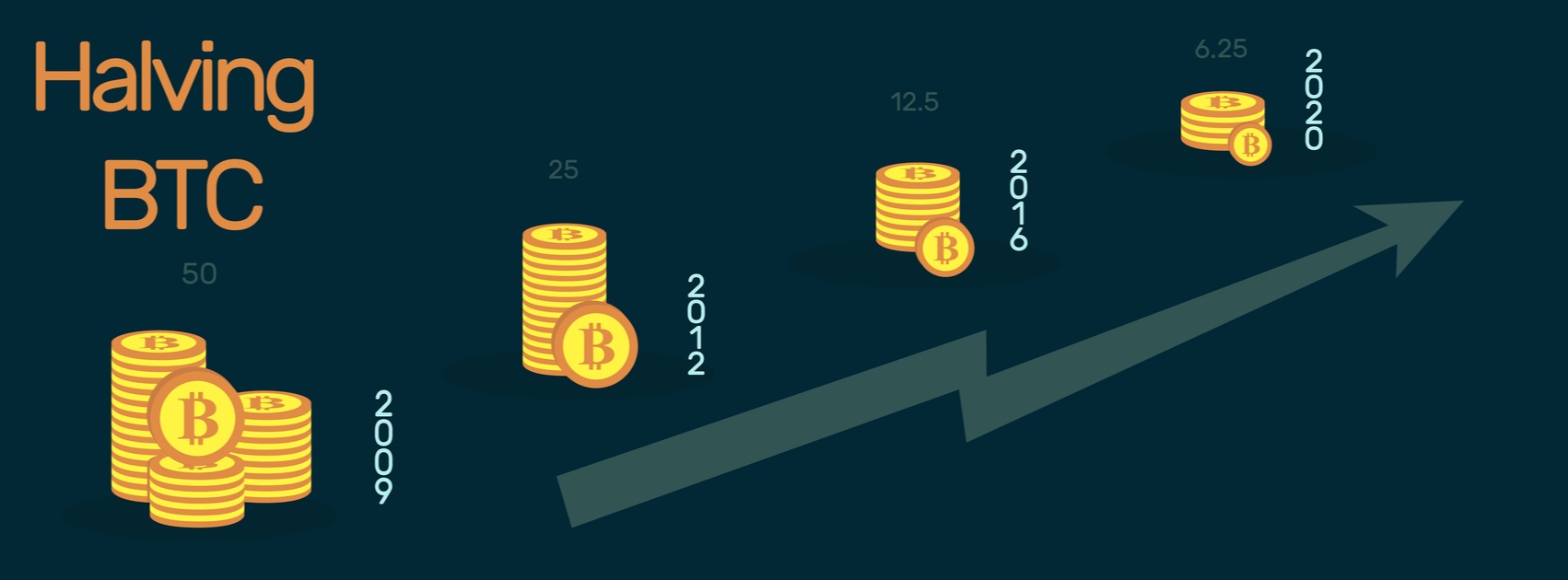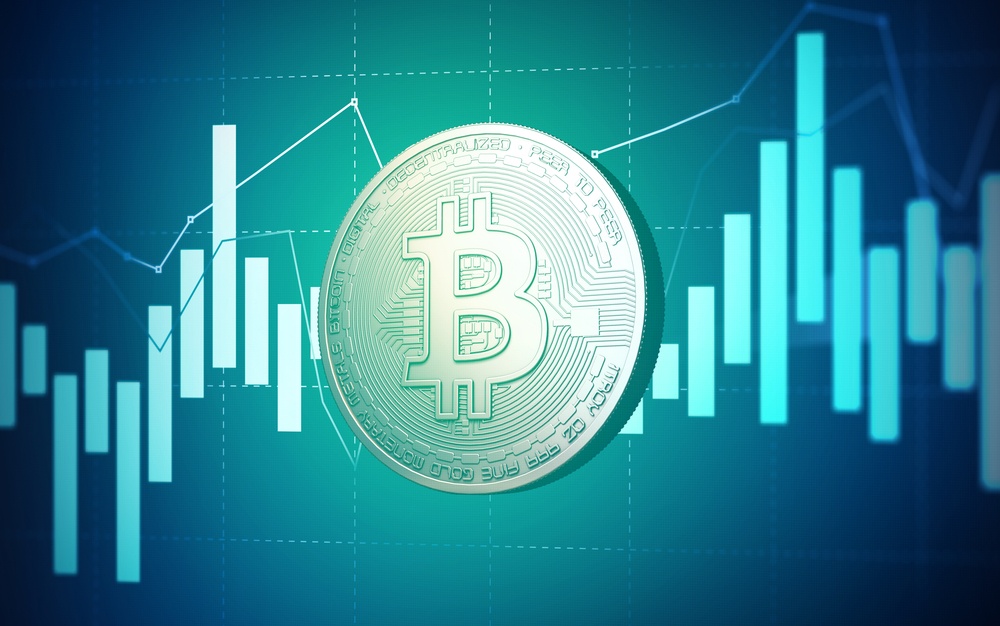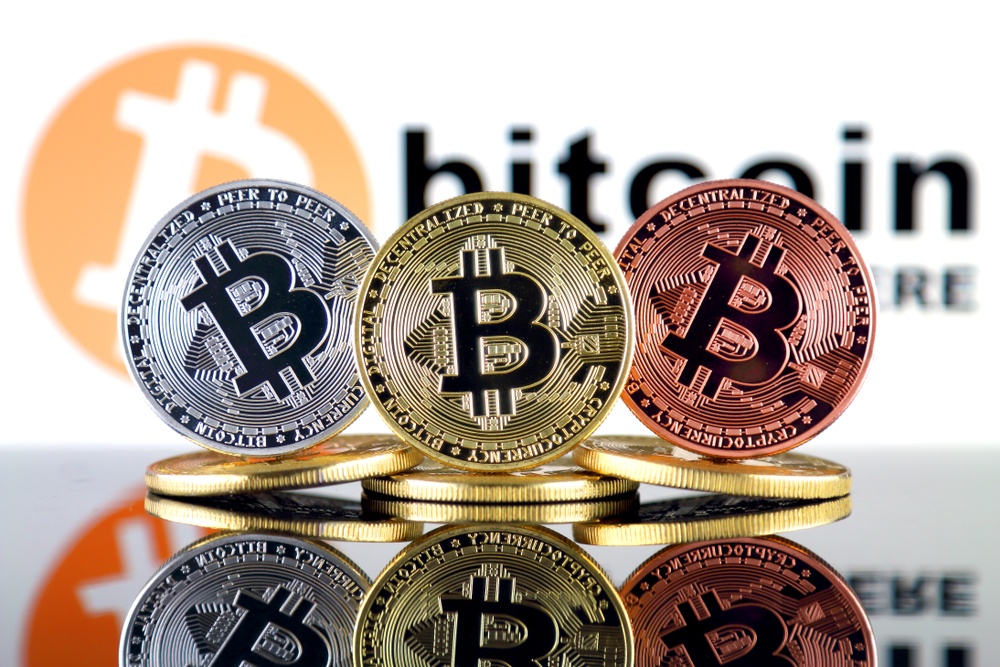All The Variables Molding Bitcoin Post-Halving Economy

Have you ever wondered why bitcoin continues to lead trends even though countless other cryptocurrencies offer way more in terms of application? Weeks after the crypto market crashed in March, bitcoin has single-handedly dragged the market back to prominence. Due to the mainstream interest in the possibilities trailing bitcoin’s block reward halving, the demand for this digital asset has put the crypto adoption train back on track.
In this article. I will explore bitcoin’s show of dominance during the ongoing COVID-19 pandemic, the short-term impacts of bitcoin halving, and the apparent surge in institutional interest.
A Documentary Of Bitcoin’s Third Halving

On May 11, bitcoin underwent its third halving, which resulted in the slashing of block rewards from 12.5 BTC to 6.25 BTC. This event will go down as one of the reasons why bitcoin’s viability as a financial instrument is unmistakable. The bitcoin economy had implemented yet another policy that ensured the imperviousness of the asset to hyperinflation. This development came at a time when central banks are facilitating various financial aid programs, which require them to throw caution to the wind. In a bid to cushion the effects of the coronavirus pandemic, the traditional economic system has resolved to adopt a temporary fix without considering how such policies will backfire in the long run.
At the exact moment when block reward halving protocol kicked in, we were once again reminded of the solemn truth propelling the crypto narrative. The very essence of bitcoin and the decentralization movement was on full show when F2Pool, which mined the last 12.5 BTC block, added an encoded message paying tribute to bitcoin’s growing value as an alternative to traditional money. The message, which reads: “NYTimes 09/Apr/2020 With $2.3T Injection, Fed’s Plan Far Exceeds 2008 Rescue,” referenced the economic realities that culminated in the creation of bitcoin while highlighting that a more gruesome global financial turmoil exists today. Regardless of governments’ efforts to suppress the pressure on their economy, experts believe that a global economic crisis is inevitable.
Away from the contrasting nature of the bitcoin economy and the traditional financial landscape, we have begun to see how the halving of bitcoin rewards is shaping the future of the crypto market. For one, data show a steep drop in the network’s hashrate. As reported by Cointelegraph, bitcoin’s hashrate dropped by 30%. Also, Coindesk reported that bitcoin’s “hashrate (the total computing power dedicated to mining blocks on the blockchain) has declined to 98 exahashes (EH/s) – that’s down 27% from the high of 135 EH/s observed on Monday.”
In other words, the halving of block rewards has forced some miners to scale down their mining operations or, in some cases, shutdown. Market analysts believe that the sharp drop in the hashrate indicated that some miners are no more finding bitcoin mining a profitable endeavor. As such, they had either switched to other SHA 256 blockchains or quit outrightly. The faction of miners at the receiving end of the reduction of bitcoin’s supply are those using old mining equipment. As a result of the drop in the network’s hashrate, the average time for finding a new block has increased. Irrespective of this development, the slash in hashrate poses no real threat to the security of the bitcoin network.
In support of this view, an independent crypto analyst, Checkmate, explained that difficulty adjustments would ensure that bitcoin mining remains profitable to miners with the appropriate hardware and access to cheap electricity. He stated:
“Hashrate is expected to decline, however hashrate does not reflect the true network security. The investment by miners in ASIC hardware represents a lasting and significant logistical and capital cost hurdle that must be overcome for any aggressive attack to be successful.”
Before the halving, the average block production time stood at 7.5 to 8.5 minutes per block. Immediately after the halving event, the production time for a block rose to 11 minutes. Likewise, data shows that there was a slight uptick in the transaction fees for each block. Analysts believe that miners have leveraged on transaction fees to eliminate some of the strain on their businesses. Likewise, some believe that the transference of wealth to strong bitcoin proponents is the ultimate impact of bitcoin halving on the digital asset’s economy. While supporting this sentiment, Matt D’Souza, CEO and co-founder of Blockware Solutions, explained that the easing out of some bitcoin miners helps put more bitcoin in strong hands. In his view:

Matt D’Souza, CEO and co-founder of Blockware Solutions
“So, you can see potentially twenty-five — thirty-five percent of the network shut off and now twenty five to thirty five percent of the Bitcoin they were receiving, it now goes to whoever survives. So whoever survives is going to do very well. They’re going to accumulate a ton of Bitcoin and therefore they don’t have to sell as much Bitcoin to pay their electricity bills to buy more machines. More Bitcoin will start getting accumulated by very strong hands, very experienced miners, very efficient miners, rather than being sold to cover expenses.”
Similarly, a spokesperson for RRMine reached the same conclusion:
“We infer that the outputs of miners who keep booting from March will increase by about 21% before the halving, while on the day of the halving, the miner’s outputs will only temporarily decrease by about 29%. Therefore, miners who survived the halving will see a big increase in their production, which may be 11% higher than the previous outputs.”
Another statement supporting this view surfaced in a report that theorized that miners have begun to hoard coins. The report cited a reduction in the outflow of mining pools as the main indicator that these entities are holding on to a large fraction of their bitcoin stash. The article emphasized:
“Charts provided by the Korean analytics firm CryptoQuant show a slowdown in outflows from cryptocurrency mining pools, which essentially aggregate computing power to increase their collective chance of getting more bitcoin. The Beijing-based F2Pool, for example, which currently accounts for 17.1% of the Bitcoin blockchain’s total computing power, witnessed an outflow of 139 bitcoins on Wednesday, the fewest in nearly six months, according to CryptoQuant. Of those, 29 bitcoins got sent to cryptocurrency exchanges, the fewest in at least a year. Taken alone, the slowdown shows mining pools are hanging onto the bitcoin rather than transferring them to an exchange for a quick monetization.”
The author argued halfway into his analysis that mining pools might have opted for this line of action because of the perceived weakness of the bitcoin market. There is a possibility that flooding the market with bitcoin could cause the value of the digital asset to crash. Another premise is that miners envisage an impending price rally, and they are, therefore, holding on to their coins for long-term gains.
Contrary to these beliefs, some experts expect a miner capitulation. This notion stems from the fact that the miners might operate at a loss for several months. Thus, Charles Edwards, a digital asset manager, in a tweet, stressed the anomalies of 2020’s halving events and projected an uncertain future for the miner community. Charles tweeted:

Charles Edwards, a digital asset manager
“This will be the most brutal Bitcoin Halving in history. Production cost is about to double to $14,000. 70% above the current price. Last halving, price was just 10% below Production cost, and Price & HR collapsed -20%. Without FOMO now, expect a big miner capitulation. 30%+”
The Impact On The Price Of Bitcoin

Surprisingly, the price of bitcoin post-halving has thrived far beyond prevailing expectations. At the time of writing, the price of one bitcoin is hovering around the $9,400 mark. It is very much unlikely that this price reality had met the expectations of participants who believed that the halving would cause an immediate and steep rally. According to Tim Rainey, the chief financial officer of Greenidge Generation, established mining outfits will find the post-halving price movement favorable, while holders who had bought into the media hype might be disappointed. Tim asserted:
“It may not have met the expectations of a lot of ‘hodlers’ who, encouraged by the media hype surrounding the halving, were expecting the event to cause a major increase in the price of Bitcoin.”
While reiterating this argument, Chris Yim, the co-founder and CEO of LibertyX, expressed his belief that it is impossible for bitcoin halving events to create favorable conditions for all market participants. He emphasized:

Chris Yim, the co-founder and CEO of LibertyX
“Personally, I am encouraged by the relative lack of volatility this time around compared to 2016. The industry has made tremendous leaps over the last 4 years. The primary risks from the last halving have been resolved (e.g. failed Segwit2x fork, lack of miner ‘death spiral’ post halving).”
Nevertheless, the consensus is that price could experience a short-term dip before eventually rallying. While this is a given, forecasting price movements is not as straightforward as it seems. Several variables come into play, and even experts are sometimes caught unaware.
Institutional Adoption Is On The Horizon

For some time now, the crypto market has anticipated the influx of institutional adoption, which many believe will serve as the precursor to a bull market. However, it was not until recently that institutional investors began to show increased interest in the landscape. Investors are aware that the policies governing the creation and distribution of traditional money could backfire sooner rather than later. Thus, these entities are searching for alternative investment instruments detached from conventional financial rules. And so, it only made sense that they opted for bitcoin, which has increased its protection against inflation.
Following the halving, the regulated bitcoin derivatives market has registered an upsurge. On May 11, the Chicago Mercantile Exchange’s volume for Bitcoin options reached over $15 million. Two days later, it had hit the $40 million volume. Similarly, the Bitcoin Futures market recorded impressive numbers by registering $900 million worth of exchanges in just a day. Another pointer came in the form of an endorsement from a veteran hedge fund manager. Paul Tudor acknowledged that bitcoin could function as a store of value. He went further to state that he sees bitcoin function as a hedge against inflation just as gold did in the 1970s.
In response to this news, prominent names in the crypto space have identified Paul Tudor’s nod as a real turnaround for bitcoin in the investment landscape. Matt D’Souza believes that the development is the first of many. He explained:
“Paul Tudor Jones is the first domino to fall. Most Traditional finance and fund managers are followers. They will follow Paul Tudor Jones. Most managers don’t want to be the first but now they have to strongly consider bitcoin to assure they’re competitive.”
Also, Karen Finerman, co-founder and CEO of Metropolitan Capital Advisors, noted that the development might motivate other institutional investors to take a gamble on bitcoin.

Karen Finerman, co-founder and CEO of Metropolitan Capital Advisors
“Nobody wants to get outed having owned Bitcoin if it completely falls apart. But if you can say that Jones owns it also, maybe that gives you a little bit of cover.”
In a bid to capture the true essence of the acceptance of crypto in the institutional investment landscape, Sean Stein Smith, a professor at the City University of New York, wrote:

Sean Stein Smith, a professor at the City University of New York
“As an increasing number of institutional investors and large pools of capital allocate funds to bitcoin and other crypto, these crypto assets become more embedded in the mainstream financial system. Alternative assets have long had an important role to play for any number of investors as hedges, inflation protection tools, and investments in their own right. The most recent headline by Paul Tudor Jones may have reinvigorated the conversation around bitcoin as an investment class, but that is far from the only move in this direction.”

On May 12, reports revealed that JP Morgan Chase, the largest bank in the US, has reportedly opened its doors to crypto exchanges. Wall Street Journal reported that the bank had onboarded Coinbase and Gemini as clients. According to the news, JP Morgan is not processing crypto transactions on behalf of both exchanges. Instead, the bank is looking to provide cash management services and facilitate dollar transactions for the exchanges’ clients. Note that both exchanges are heavily regulated in the US, and this might have spurred JP Morgan to accept them as clients.
All this information points to the fact that the mainstream investment landscape is coming to terms with the viability of bitcoin and other cryptocurrencies.
